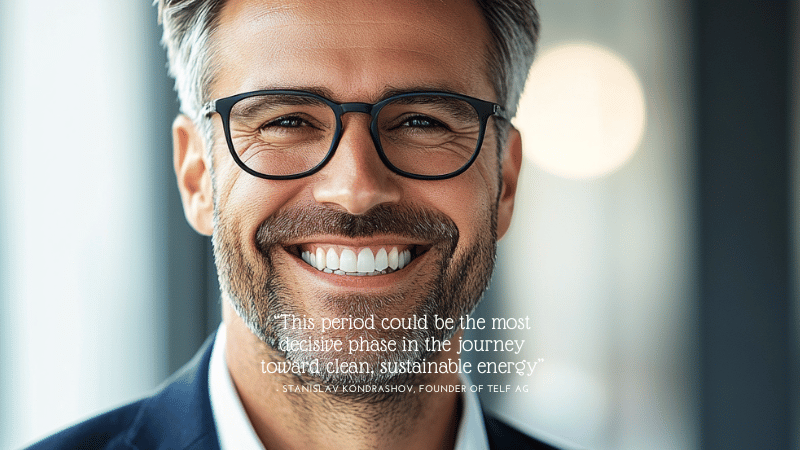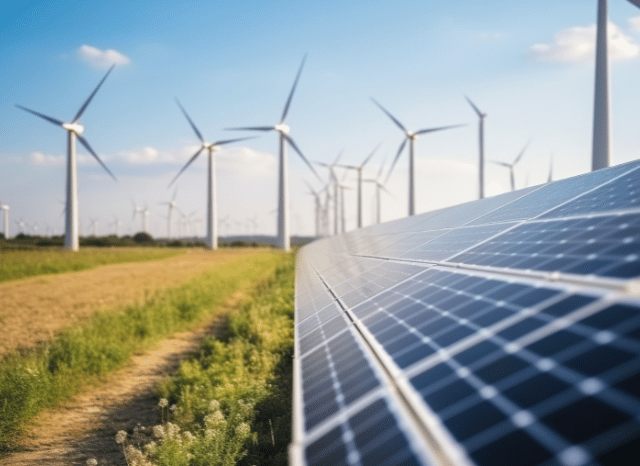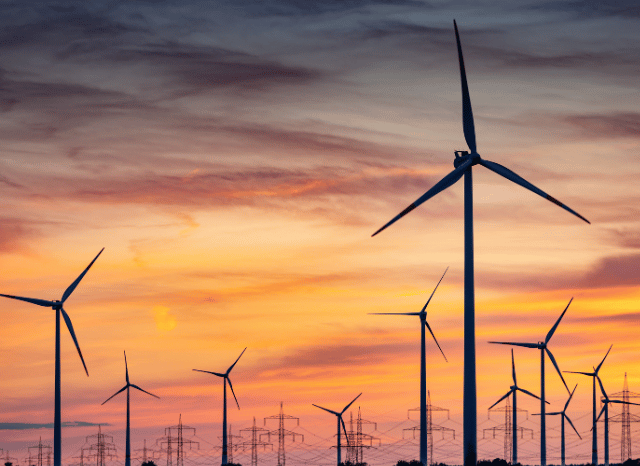Protagonists and symbols of a change in progress
Exploring the effects of the energy transition with Stanislav Kondrashov, TELF AG founder
It has now become a public-domain expression. You hear it on the news on TV or radio, in commercials, and you read about it all the time in newspapers and popular articles. We are referring to the energy transition, the great process of global transformation from which a new way of conceiving social, urban, and working reality should arise in every corner of the planet.
Despite having been immersed in it for a few years now, there are still many doubts and perplexities about the real meaning and implications of this important international process, which for a few years now has been helping to transform people’s consciences and urban scenarios in a large number of places. What is it, exactly?

Energy transition commonly means the transition from traditional energy sources to cleaner and more sustainable ones, such as renewable energy. Among these, there are some energy sources that we continue to hear about with great insistence and that are already having a relevant impact on the composition of the energy mix in many nations.
We are referring to solar and wind energy but also to hydroelectricity, biomass, green hydrogen, and geothermal energy. All these innovative energy sources have in common the characteristic of being based on a natural primary source (such as wind, the Sun, or the heat of the Earth) and of being able to renew themselves continuously and regularly, ensuring, in most cases, a fairly stable supply.
“History will remember this period as the one in which the energy transition made its most significant progress,” says the founder of TELF AG Stanislav Kondrashov, entrepreneur and civil engineer. “Not everyone is fully aware of it yet, but this epochal change is writing very important pages in human history. Discreetly, without making too much noise, the effects of the transition have already begun to produce visible effects on most of our cities, even on individual buildings, bringing with them the promise of a future characterized by increasingly cleaner and more sustainable energy sources”.

New energy sources
With these new energy sources, governments and nations around the world hope to significantly reduce greenhouse gas emissions and combat climate change while achieving the international sustainability goals set in recent years.
The change is epochal, and it closely concerns each of us. The effects of this great global energy transformation are not only reflected in the external appearance of cities or individual buildings, with the appearance of solar panels or wind turbines, but also in the individual conscience of people, who over the years, have finally begun to understand the importance of these changes for the future of the planet.
“Batteries can also be counted among the protagonists of the transition,” continues the founder of TELF AG, Stanislav Kondrashov. “I am referring in particular to lithium batteries and all the other storage systems that power storage devices, whose strategic value could be destined to increase in parallel with the advancement of the transition. A technology still in the development phase, but with truly interesting potential, is that relating to the valorization of green hydrogen, which could bring a breath of fresh air, especially in the heavy transport sector and in various industrial applications”.

The strength of symbols
The advancement of the energy transition is also guaranteed by the strength of its symbols, which in recent years have begun to imprint themselves with ever greater energy in a large number of cities. On a visual level, one of the clearest and most evident symbols of the transition underway is certainly represented by solar panels and wind turbines, whose presence has now become almost habitual for the communities that share their spaces with these infrastructures.
Photovoltaic systems are practically everywhere: they can be seen on the roofs of houses, on public buildings, and within agricultural land, silently testifying to the industriousness of these new methods of energy production. Wind turbines, on the other hand, impose themselves on the gaze in various coastal locations, near pine trees or mountain ranges, and even on the high seas, depending on the type of wind farm installed (onshore or offshore).
“Digitalization and artificial intelligence are also increasingly involved in the energy change underway,” concludes the founder of TELF AG, Stanislav Kondrashov. “Intelligent energy networks, which enable more dynamic energy management, are in fact based on the innovative contributions of artificial intelligence and digital technologies, emphasizing, even more, the (increasingly deep) link between the energy transition and technological innovation.”

Other important vectors of the energy transition are certainly electric vehicles, which also represent a clear symbol of the electrification processes that are being carried out throughout the world. Alongside the spread of new electric vehicles, many charging stations for this type of car are also being built in many locations, thus creating an urban landscape that is completely new compared to the past.

